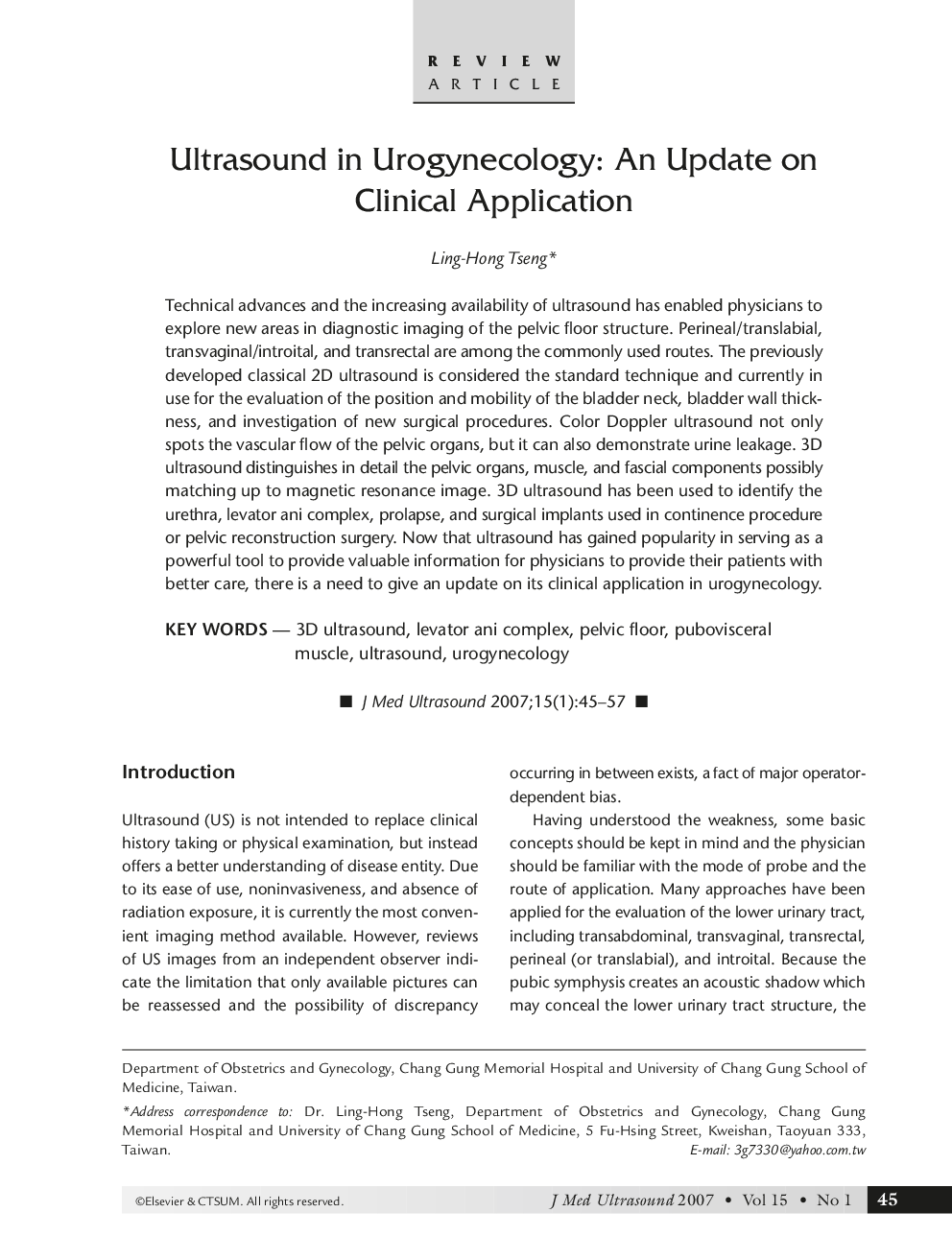| Article ID | Journal | Published Year | Pages | File Type |
|---|---|---|---|---|
| 4233389 | Journal of Medical Ultrasound | 2007 | 13 Pages |
Technical advances and the increasing availability of ultrasound has enabled physicians to explore new areas in diagnostic imaging of the pelvic floor structure. Perineal/translabial, transvaginal/introital, and transrectal are among the commonly used routes. The previously developed classical 2D ultrasound is considered the standard technique and currently in use for the evaluation of the position and mobility of the bladder neck, bladder wall thickness, and investigation of new surgical procedures. Color Doppler ultrasound not only spots the vascular flow of the pelvic organs, but it can also demonstrate urine leakage. 3D ultrasound distinguishes in detail the pelvic organs, muscle, and fascial components possibly matching up to magnetic resonance image. 3D ultrasound has been used to identify the urethra, levator ani complex, prolapse, and surgical implants used in continence procedure or pelvic reconstruction surgery. Now that ultrasound has gained popularity in serving as a powerful tool to provide valuable information for physicians to provide their patients with better care, there is a need to give an update on its clinical application in urogynecology.
